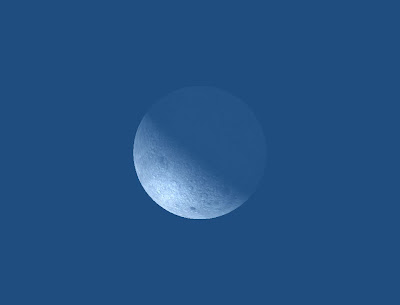Moon Phases
Tue., August 6, 5:51 p.m. EDT
New Moon
The Moon is not visible on the date of New Moon because it
is too close to the Sun, but can be seen low in the east as a narrow crescent a
morning or two before, just before sunrise. It is visible low in the west an
evening or two after New Moon.
Wed., August 14, 6:56 a.m. EDT
First Quarter Moon
The First Quarter Moon rises around 2:30 p.m. and sets
around 12:30 a.m. It dominates the evening sky.
Tue., August 20, 9:45 p.m. EDT
Full Moon
The Full Moon of August is usually called the Corn Moon,
Sturgeon Moon, Red Moon, Green Corn Moon or Grain Moon. In Cree it is called
Opunhopizun, meaning “moon young ducks begin to fly.” The Full Moon rises
around sunset and sets around sunrise, the only night in the month when the
Moon is in the sky all night long. The rest of the month, the Moon spends at
least some time in the daytime sky.
Wed., August 28, 5:35 a.m. EDT
Last Quarter Moon
The Last Quarter Moon rises around 11:30 p.m. and sets
around 2:45 p.m. It is most easily seen just after sunrise in the southern sky.
Observing Highlights
Sat., August 3, 9 p.m. EDT
Juno at opposition
The asteroid 3 Juno reaches opposition in eastern Aquarius.
Four nights later it crosses the boundary into the constellation Aquarius,
where it remains until September 1, when it continues into Capricornus.
Fri, August 9, sunset
Venus and the Moon
The thin waxing crescent Moon passes just south of the
bright planet Venus, low in the western sky just after sunset.
Sun. and Mon., August 11 and 12, all night
Perseid meteor shower
The peak of the Perseid meteor shower, usually the best in the
year, occurs in the middle of the day on Monday August 12, so both the night
before and the night after will both be good to observe meteors. Usually
meteors are more frequent after local midnight, around 1 a.m. local daylight
saving time. The crescent moon setting before 11 p.m. won’t interfere with the
meteors, which are best observed from a dark country location.
Mon., August 12, evening
Saturn and the Moon
Saturn will be just above the waxing crescent Moon.
Mon., August 26, 10 p.m. EDT
Neptune at opposition
The planet Neptune will reach opposition to the Sun in the
constellation Aquarius. It will be visible all night in binoculars or a small
telescope.
Sat., August 31, morning
Jupiter and the Moon
Jupiter will be just to the left of the waning crescent
Moon.
Planets
Mercury was at its
greatest elongation west of the Sun on July 30, so will be well placed for
observation just before sunrise in the eastern sky for observers in the
Northern Hemisphere for the first half of August.
Venus is now a
bright “evening star” setting just after the sun.
Mars is now a bright
object in the morning sky. For the first three weeks of August, Mars is in
Gemini, then on August 25 it moves into Cancer.
Jupiter is the
brightest object in the morning sky all month. As the month begins, three
planets, Jupiter, Mars and Mercury, are all gathered together in Gemini.
Jupiter stays in Gemini all month, while the others move off into Cancer.
Saturn is low in the
southwestern sky as dusk falls, and sets around 11 p.m.
Uranus is in Pisces,
rising in the late evening.
Neptune is in
opposition in Aquarius on August 26, and is visible all night.
Geoff Gaherty
Starry Night Software Support
All graphics © 2013 Starry Night Software
















